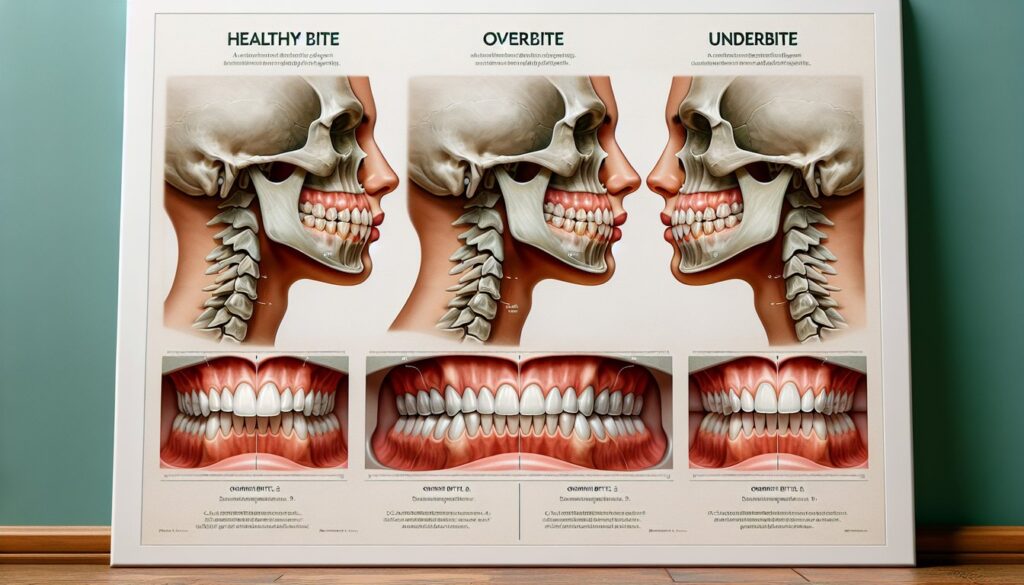
Welcome to an insightful exploration into the realm of dental anatomy and corrective dentistry. Today, we dive deep into understanding two common orthodontic conditions: overbite and underbite. These terms often pop up during dental visits, but what do they really mean, and how do they affect our oral health? More importantly, what are the causes behind them and the treatments? Dr. Suzanne Land, a passionate advocate for family dentistry, guides us through this complex topic with the goal of demystifying these conditions and shedding light on the latest treatment options, all within the comforting embrace of a family-oriented dental practice.
Defining Overbite and Underbite
An overbite, medically known as a class II malocclusion, is characterized by the upper teeth extending far beyond the lower teeth. It can be due to a variety of factors such as genetics, poor oral habits, or abnormal bone development. An underbite, or class III malocclusion, presents as lower teeth that protrude past the upper teeth, often caused by an overgrowth of the lower jaw, undergrowth of the upper jaw, or both.
Causes Behind Overbite and Underbite
Understanding the root causes of overbite and underbite is essential in determining the course of treatment. Let’s break them down:
- Genetics: Just as we inherit eye color from our parents, the structure of our jaws and teeth positioning can be inherited traits. This genetic predisposition is a leading cause for malocclusion.
- Childhood Habits: Early childhood habits such as thumb sucking, prolonged use of a pacifier, or bottle feeding can influence jaw development and bite alignment.
- Trauma: Accidents resulting in facial injury can disrupt the natural growth and positioning of the jaw and teeth.
- Tumor: Abnormal growths in the jaw can force teeth into misalignment.
Each of these factors can contribute to the need for orthodontic intervention, as detailed by the American Dental Association.
Effective Treatments
Treatment for overbite and underbite often involves a multi-disciplinary approach that may include braces, clear aligners, or even surgery. Dr. Suzanne Land and her team are well-versed in the following treatments:
- Braces: Traditional metal braces are a time-tested treatment for correcting bite alignment. They work by applying continuous pressure over a period of time to slowly move teeth into the desired position.
- Clear Aligners: As a more aesthetically pleasing option, clear aligners such as Invisalign provide a virtually invisible treatment process, favored by adults and teens alike.
- Surgery: Orthognathic surgery may be necessary in severe cases where skeletal abnormalities are present, and orthodontic treatments alone are insufficient.
Rest assured, the team at Dr. Suzanne Land & Associates Family Dentistry will tailor a treatment plan to your unique needs.
Conclusion
An overbite or underbite can not only affect the visual appeal of your smile but also lead to oral health issues like tooth decay, gum disease, and difficulty in speaking or chewing. Understanding the causes and available treatments is the first step towards a healthier, more confident smile. Under the expert care of Dr. Suzanne Land & Associates, patients can look forward to receiving comprehensive and compassionate treatment in the pursuit of optimal dental health.
Contact Us
Are you or a loved one dealing with an overbite or underbite? Don’t let confusion hold you back from getting the care you deserve. Contact Dr. Suzanne Land & Associates Family Dentistry today to schedule an appointment and take the first step towards your perfect smile.
